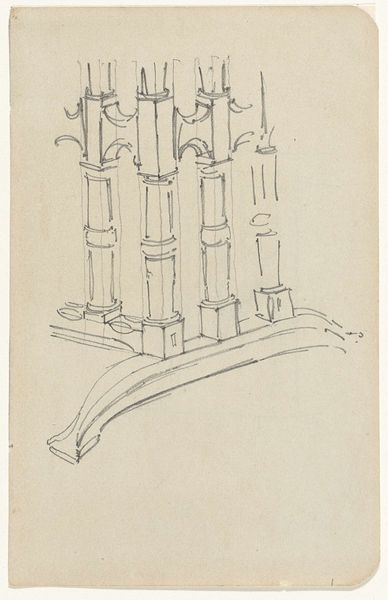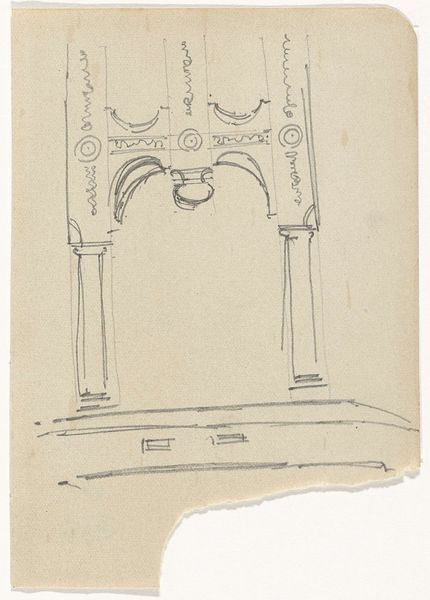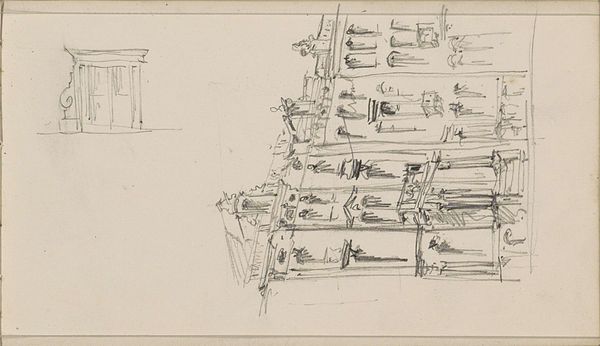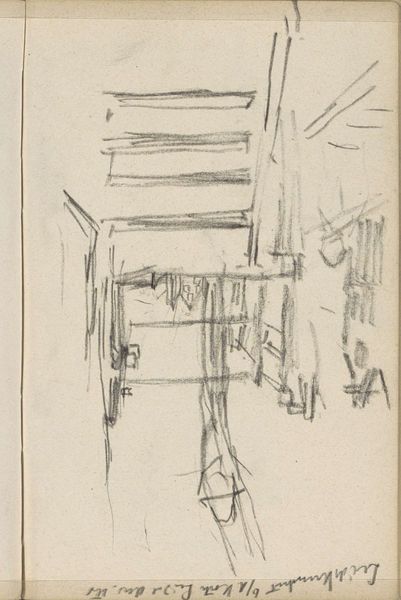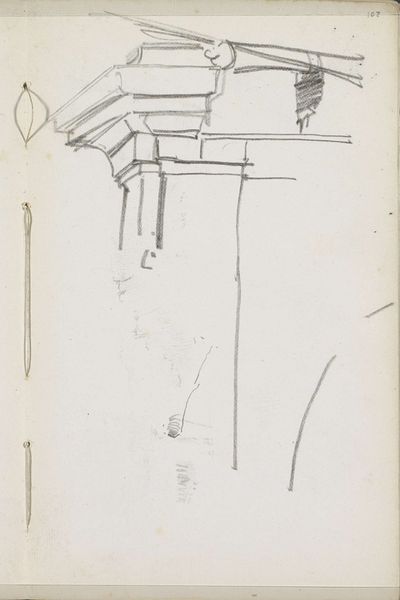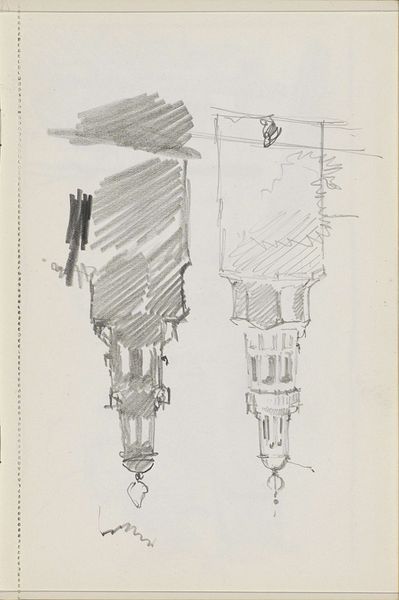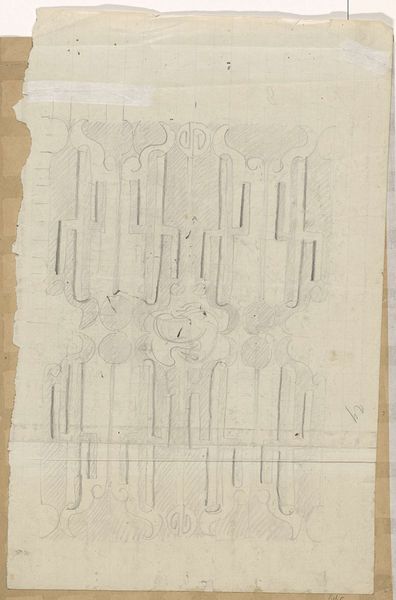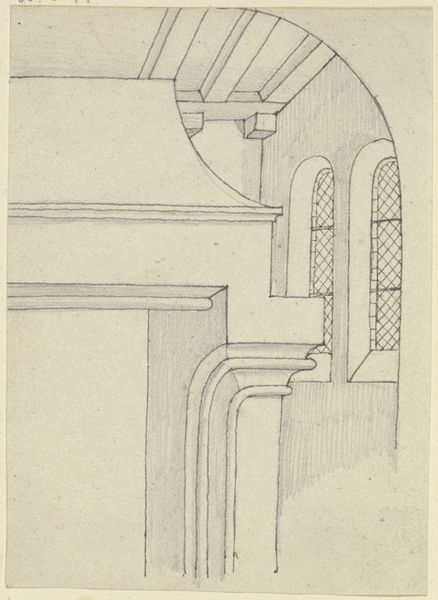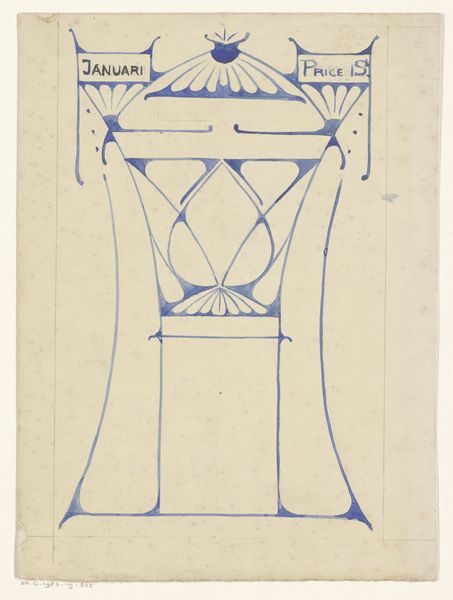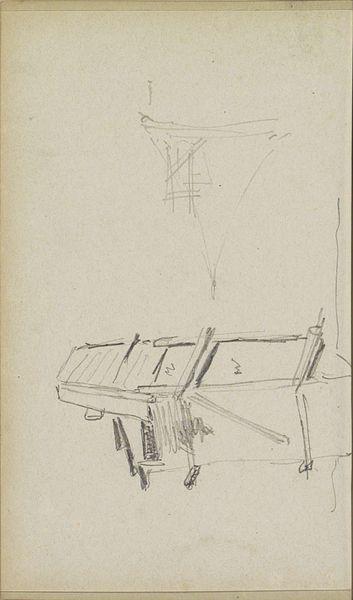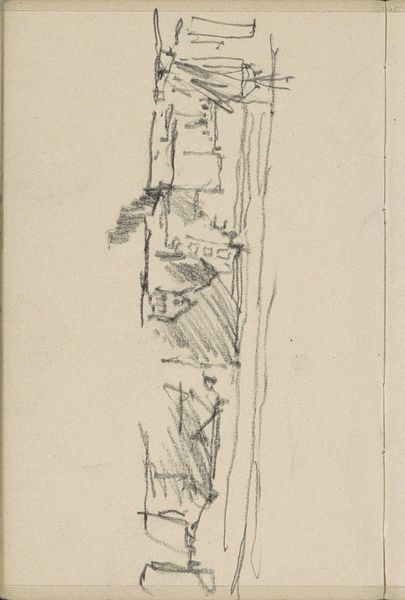
drawing, pencil
#
architectural sketch
#
drawing
#
table
#
toned paper
#
quirky sketch
#
etching
#
form
#
personal sketchbook
#
sketchwork
#
ink drawing experimentation
#
geometric
#
sketch
#
pen-ink sketch
#
pencil
#
line
#
sketchbook drawing
#
storyboard and sketchbook work
Dimensions: height 163 mm, width 105 mm
Copyright: Rijks Museum: Open Domain
Curator: Gerrit Willem Dijsselhof created this pen and pencil sketch, "Schets van het onderstel van een tafeltje"—or "Sketch of the base of a table"—sometime between 1876 and 1924. It now resides in the Rijksmuseum collection. Editor: Immediately, I’m struck by how airy the construction is. The light pencil work against the toned paper gives the table base a delicate, almost ephemeral quality. Curator: It is indeed quite ethereal. The bare structure, those classical columns as legs...they evoke images of ancient ruins and foundational architecture. There's something timeless in its representation. Editor: For me, that delicacy clashes wonderfully with the proposed function! Furniture is about weight, support, tangible use, but this sketch focuses on line, void, negative space. You barely sense the material's density or solidity. How would it be made, really? What wood is Dijsselhof even thinking about? Curator: Interesting! Thinking of a table’s structure beyond merely its utilitarian value might shift your perception of its design. There's an exploration of form, a play with expectations embedded within Dijsselhof’s linework. The arch and the pillar – eternal shapes refined into something commonplace, yet here made sublime again. Editor: Absolutely, it encourages one to consider the journey of the raw material, too – its initial harvesting and all the subsequent stages, and processes involved in its preparation, ultimately influencing the form of the support sketched here. It seems he is focused more on how he can play with structure to almost disguise what it actually is, playing more on how to deconstruct a simple table, but still make it appealing. Curator: The act of sketching, a personal meditation on structure and material, preserved for posterity. A fleeting thought given lasting form, hinting towards something beyond pure functionality. I see echos of so many ideas! Editor: So it's also about considering how such simple lines translate, even conceptually, to a solid structure, ready for manufacture. It feels incomplete but still rich with questions on craftsmanship. Curator: Precisely. That incomplete nature lends it such an inviting vulnerability. We're let into his process, asked to engage not with a finished product, but the blossoming potential. Editor: That's so insightful, an engagement with the blueprint of our material world.
Comments
No comments
Be the first to comment and join the conversation on the ultimate creative platform.
